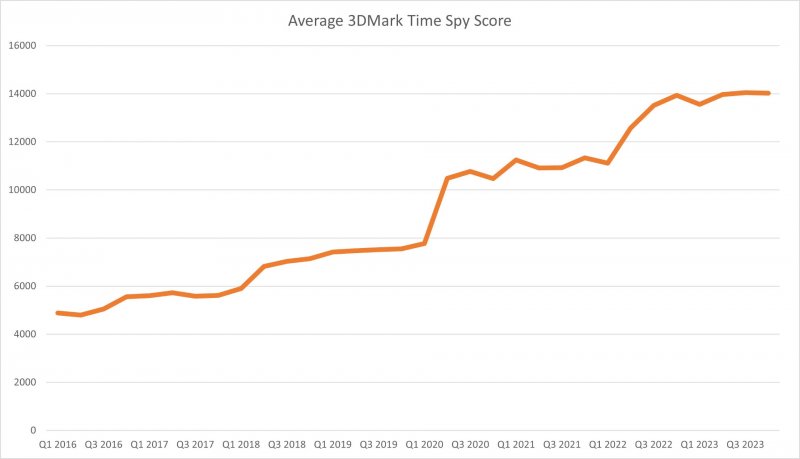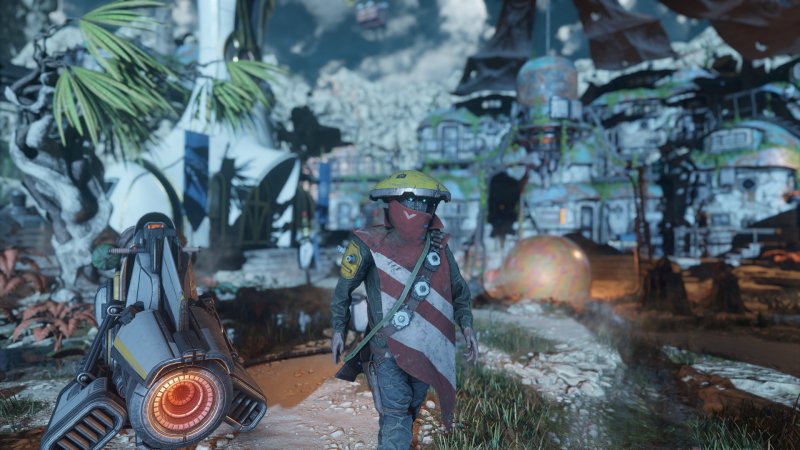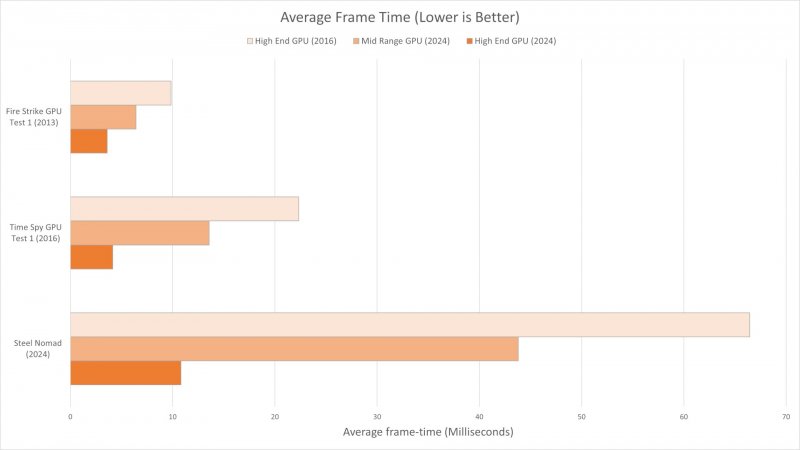On May 21, 2024, UL released its new cross-platform non-ray tracing benchmarks, 3DMark Steel Nomad and 3DMark Steel Nomad Light. Both will be available to all 3DMark users, including those who own the Basic version, or Demo according to the new nomenclature.
For the occasion, in fact, UL has also updated the names of the various editions of 3D Mark:
Time Spy’s legacy
Steel Nomad will take over Time Spy, the popular GPU test introduced in 2016 that has accumulated around 48 million results over its history. With this incredible number of tests, the 3DMark team saw fit to give us a graph of GPU usage on the platform, so as to show how GPU performance has changed in just eight years. The data reveals a performance increase of approximately 2.8 times over the period considered.
UL has no plans to retire Time Spy immediately, but suggests using the new benchmarks to better represent the experience of the new hardware. Like Steel Nomad, 3DMark Time Spy is in fact a non-ray tracing benchmark that uses the DirectX 12 libraries, but does not take advantage of the latest DX12 Ultimate technologies such as mesh shader, variable rate shading or sampler feedback. And this made Time Spy’s results gradually less significant.
Beyond the values themselves, however, the graph is also interesting for retracing the history of GPUs in recent years. We see, for example, a huge increase in average GPU scores in 2020 and 2022, when both NVIDIA and AMD brought their new GPU architectures to market (RTX 30 and RX 6000 in 2020, RTX 40 and RX 7000 in 2022 respectively ). We then notice a clear pause after the release of the RTX 40 and RX 7000 series, and perhaps even a decline, probably due to the high price of the new GPUs in that period, while today the trend has entered a stalemate phase, since Time Spy is no longer used as frequently. In fact, benchmarks with ray tracing, such as Port Royal and Speed Way, are now preferred.
You can find a recap of the applications now available on 3DMark in the table below:
What’s new from Steel Nomad
But what will it bring new Steel Nomad? As mentioned, the newcomer is a non-raytraced, cross-platform GPU benchmark just like Time Spy, but uses all the new technologies. First turn at one native 4K resolution and it is 3 times heavier on the PC than its predecessor. However, if we analyze some data provided by UL, performance with a modern GPU is not negatively impacted, because Steel Nomad is less subject to a possible bottleneck represented by the CPU.
Steel Nomad is available on Windows and Windows-on-Arm using the DirectX 12 and Vulkan libraries, on Android using Vulkan, and on iOS using Metal. Information on support for macOS will arrive shortly, while for Linux we will have to wait a little longer. The API will then be updated over the years and the benchmark will also have an audio section, which seems to be an element much requested by users.
Speaking of Windows-on-Arm, however, did you know that there is already a site approved by Microsoft that says which games are supported?
#Time #Spys #farewell #million #tests #reveals #GPU #performance #years


